Navigation
China Closes Five of its Six Depleting Chemical Plants
China, the world's largest producer of chlorofluorocarbons (CFC) and halons, shut down five of its six remaining plants on July 1, 2007. This action puts the country two and a half years ahead of the Montreal Protocol's 2010 deadline for phase-out of the two ozone-depleting chemicals.
China, the world's largest producer of chlorofluorocarbons (CFC) and halons, shut down five of its six remaining plants on July 1, 2007. This action puts the country two and a half years ahead of the Montreal Protocol's 2010 deadline for phase-out of the two ozone-depleting chemicals.
Such chemicals contribute to weaken the ozone layer allowing for dangerous ultraviolet radiation producing skin cancer, eye cataracts and suppression of human immune system.
Without response to the Montreal Protocol, levels of ozone-depleting substances in the atmosphere would have increased tenfold by 2050, which could have led to up to 20 million more cases of skin cancer and 130 million more cases of eye cataracts relative to 1980.
Ninety five per cent of all ozone depleting substances controlled by the global treaty known as the Montreal Protocol have been phased out – but what remains will be difficult to eliminate.
The Chinese facilities were closed during a symbolic ceremony organized by Chinese authorities in recognition of chemical companies' efforts to stop manufacturing products that harm the ozone layer and as part of the global "Remembering Our Future" initiative sponsored by the United Nations Environment Programme (UNEP).
The shut down of the five facilities, in Chiangshou City, near Shanghai, will bring China's production of CFCs to about 550 metric tons, down from 55,000 metric tons at its peak in 1998. The remaining production is being kept strictly to produce CFCs for metered-dose inhalers, used in the treatment of asthma and chronic obstructive pulmonary disease. The phase-out of the majority of CFC production marks the second major class of ozone-depleting chemicals that China has ceased to produce. China has also recently ended the production of halon for emissive use -- in other words, any use that will have the chemical eventually end up in the atmosphere.
China became the largest producer of ozone depleting chemicals following the shut down of plants producing these chemicals in developed countries in 1996. The closure of the Chinese plants now puts India and South Korea as leading producers of the two ozone depleting chemicals in Asia Pacific, with a remaining combined production level of about 15,000 m/tons.
Achim Steiner, UN Under Secretary-General and Executive Director of the United Nations Environment Programme (UNEP), said: "On the 20th Anniversary of the Montreal Protocol, with more than 95% of the ozone depleting substances being phased out, the Protocol is among the great success stories of recent years. This success underlines how, with political will, creative financing mechanisms and the support for industry and NGOs, the international community can rise to the challenge of sustainable development."
"New research findings in 2007 also confirm that the phase outs are having other positive impacts, including on climate change. Scientists calculate that, over the period 1990 to 2010, the level of reductions will also equate in climate terms to the equivalent of eight Gigatonnes of carbon dioxide a year. This is one example of a virtuous circle, and I am convinced there are many others linked not only with ozone, but across a wide array of environmental treaties and agreements," Steiner said.
Katherine Sierra, Vice President for Sustainable Development at the World Bank, said: "The closure of CFC production facilities in China is marking a significant milestone not only for the Montreal Protocol, but also for the cooperation between the Government of China and the industry in their efforts to restore the ozone layer. A depleted ozone layer would have both adverse health and economic impacts to all nations. Action taken by China today contributes significantly to the global efforts in averting the global catastrophe on human health and ecosystem "
Added Sierra: "The Multilateral Fund has enabled China to contribute to the global efforts in protecting the ozone layer on an equal footing with all other nations without compromising its goal on sustainable development."
Chlorofluorocarbons are used in refrigerators and air conditioners, while halons are found in fire extinguishers. Thirty-one CFC/halon-producing factories have already been shut down earlier by Chinese authorities with support from the World Bank and the Montreal Protocol's Multilateral Fund. Closures were made possible because China has, over the years, developed ozone-friendly alternatives and adopted alternative technologies.
"The closure of these plants demonstrates China's continued commitment to meet its obligations under this treaty to phase out these chemicals. With the closing of these facilities, industry and consumers both here and in Asia Pacific must realize that there will soon be significant reductions in ozone depleting chemicals and that we should be prepared for the changes that are to come," said Zhang Lijun, Vice Minister, State Environmental Protection Administration (SEPA).
Under the Montreal Protocol, which went into force in 1987, ozone depleting chemicals are being successfully phased out worldwide with assistance from the Montreal Protocol's Multilateral Fund. Ozone chemicals like CFCs and halon have been phased out in developed countries by 1996 except for small essential uses. By 2010, production of ozone depleting substances will be banned in developing countries, including countries in Asia and the Pacific, a region that accounts for 70 per cent of global consumption of CFC. To date, the Multilateral Fund has already financed activities to phase out of CFC consumption in more than 140 developing nations.
Contacts:
Ms. Satwant Kaur
UNEP Regional Information Officer for Asia and the Pacific,
+66-2-288-2127
or
Ms. Xiaofang Zhou, Director, SEPA
Division for the Montreal Protocol
Beijing
+86-10-8857-7175 zhou.xiaofang@sepafeco.org.cn
or
Jim Sniffen
Information Officer
UN Environment Programme
New York
tel: +1-212-963-8094/8210
From a UNEP ROAP News Release and UNEP Sources. UNEP is solely responsible for the contents of this article. News from Chiangshou, China 1 July 2007.
NOTES:
United Nations Environment Programme (UNEP) is the United Nations system's designated entity for addressing environmental issues at the global and regional level. Its mandate is to coordinate the development of environmental policy consensus by keeping the global environment under review and bringing emerging issues to the attention of Governments and the international community for action. UNEP is a collaborator with the Horizon Solutions Site.
Montreal Protocol on Substances That Deplete the Ozone Layer
The Montreal Protocol on Substances That Deplete the Ozone Layer is an international treaty designed to protect the ozone layer by phasing out the production and consumption of a number of substances believed to be responsible for ozone depletion. The treaty was opened for signature on September 16, 1987 and entered into force on January 1, 1989. Since then, it has undergone five revisions, in 1990 (London), 1992 (Copenhagen), 1995 (Vienna), 1997 (Montreal), and 1999 (Beijing). Due to its widespread adoption and implementation it has been hailed as an example of exceptional international cooperation with former Secretary General Kofi Annan quoted as saying it is "Perhaps the single most successful international agreement to date...". The global community will celebrate 29th Anniversary of the signing of this ground breaking international treaty on 16th September 2007in Montreal .
About the Compliance Assistance Programme (CAP) for Asia and the Pacific
In 2002, UNEP as an Implementing Agency of the Multilateral Fund of the Montreal Protocol made a conscious departure from the past in assisting developing countries to enable them to implement the Montreal Protocol. This departure emerges from the new context in which developing countries now operate under the compliance regime of the Protocol. The new context of compliance regime requires countries to: achieve and sustain compliance, promote a greater sense of country ownership and implement the agreed Executive Committee framework for strategic planning.
In line with this re-orientation, UNEP proposed through the Compliance Assistance Programme (CAP) to begin moving from project management approach to a direct implementation initiative through its specialized staff. Consistent with the above approach the Regional Office for Asia and Pacific (ROAP) CAP team has developed to be the centre for policy advice, compliance guidance and conduct training to refrigeration technicians, customs officers and other relevant stakeholders on compliance issues, promote bilateral and multilateral cooperation and promote high-level awareness by utilizing UNEP's staff.
For more information about Division of Technology, Industry and Economics and the OzonAction Programme, please go to http://www.unep.fr/ozonaction
Multilateral Fund Information can be found at http://www.multilateralfund.org/about_the_multilateral_fund.htm
The World Bank's Montreal Protocol Program
The World Bank as an implementing agency for the Multilateral Fund of the Montreal Protocol has primarily developed technological conversion projects, through which technologies based on ozone depleting gases are phased-out and replaced by others based on ozone-friendly substances. The main sectors targeted have been refrigeration and mobile air conditioning, foams, aerosols, solvents, and fire control.
UNEP Ozone online Publications at http://ozone.unep.org/Publications/:
Download Handbook in PDF
(A Arabic) (C Chinese) (E English) (F French) (R Russian) (S Spanish)
Environmental Effects of Ozone Depletion and its Interactions with Climate Change: 2006 Assessment
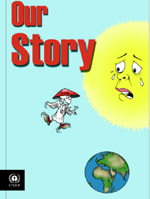 |
| Our Story (2005) |
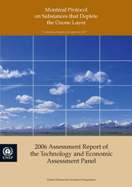 |
| Scientific Assessment of Ozone Depletion: 2006 |
Ozone Depletion: 2006
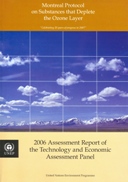 |
| Technology and Economic Assessment Panel: 2006 Assessment |
Technology and Economic Assessment
Panel: 2006 Assessment
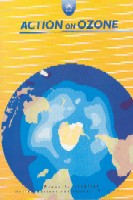 |
| Action on Ozone |
2000 Edition
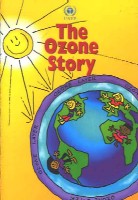 |
| The Ozone Story |
Second Edition 2000
(pdf, 745Kb)
Key achievements of the Montreal Protocol to date
20th Anniversary Information Kit - Arabic
http://ozone.unep.org/Publications/MP_Your_Ozone_website-A.pdf Arabic
Search
Latest articles
Agriculture
- World Water Week: Healthy ecosystems essential to human health: from coronavirus to malnutrition Online session Wednesday 24 August 17:00-18:20
- World Water Week: Healthy ecosystems essential to human health: from coronavirus to malnutrition Online session Wednesday 24 August 17:00-18:20
Air Pollution
- "Water and Sanitation-Related Diseases and the Changing Environment: Challenges, Interventions, and Preventive Measures" Volume 2 Is Now Available
- Global Innovation Exchange Co-Created by Horizon International, USAID, Bill and Melinda Gates Foundation and Others
Biodiversity
- It is time for international mobilization against climate change
- World Water Week: Healthy ecosystems essential to human health: from coronavirus to malnutrition Online session Wednesday 24 August 17:00-18:20
Desertification
- World Water Week: Healthy ecosystems essential to human health: from coronavirus to malnutrition Online session Wednesday 24 August 17:00-18:20
- UN Food Systems Summit Receives Over 1,200 Ideas to Help Meet Sustainable Development Goals
Endangered Species
- Mangrove Action Project Collaborates to Restore and Preserve Mangrove Ecosystems
- Coral Research in Palau offers a “Glimmer of Hope”
Energy
- Global Innovation Exchange Co-Created by Horizon International, USAID, Bill and Melinda Gates Foundation and Others
- Wildlife Preservation in Southeast Nova Scotia
Exhibits
- Global Innovation Exchange Co-Created by Horizon International, USAID, Bill and Melinda Gates Foundation and Others
- Coral Reefs
Forests
- NASA Satellites Reveal Major Shifts in Global Freshwater Updated June 2020
- Global Innovation Exchange Co-Created by Horizon International, USAID, Bill and Melinda Gates Foundation and Others
Global Climate Change
- It is time for international mobilization against climate change
- It is time for international mobilization against climate change
Global Health
- World Water Week: Healthy ecosystems essential to human health: from coronavirus to malnutrition Online session Wednesday 24 August 17:00-18:20
- More than 400 schoolgirls, family and teachers rescued from Afghanistan by small coalition
Industry
- "Water and Sanitation-Related Diseases and the Changing Environment: Challenges, Interventions, and Preventive Measures" Volume 2 Is Now Available
- Global Innovation Exchange Co-Created by Horizon International, USAID, Bill and Melinda Gates Foundation and Others
Natural Disaster Relief
- STOP ATTACKS ON HEALTH CARE IN UKRAINE
- Global Innovation Exchange Co-Created by Horizon International, USAID, Bill and Melinda Gates Foundation and Others
News and Special Reports
- World Water Week: Healthy ecosystems essential to human health: from coronavirus to malnutrition Online session Wednesday 24 August 17:00-18:20
- STOP ATTACKS ON HEALTH CARE IN UKRAINE
Oceans, Coral Reefs
- World Water Week: Healthy ecosystems essential to human health: from coronavirus to malnutrition Online session Wednesday 24 August 17:00-18:20
- Mangrove Action Project Collaborates to Restore and Preserve Mangrove Ecosystems
Pollution
- Zakaria Ouedraogo of Burkina Faso Produces Film “Nzoue Fiyen: Water Not Drinkable”
- "Water and Sanitation-Related Diseases and the Changing Environment: Challenges, Interventions, and Preventive Measures" Volume 2 Is Now Available
Population
- "Water and Sanitation-Related Diseases and the Changing Environment: Challenges, Interventions, and Preventive Measures" Volume 2 Is Now Available
- "Water and Sanitation-Related Diseases and the Changing Environment: Challenges, Interventions, and Preventive Measures" Volume 2 Is Now Available
Public Health
- Honouring the visionary behind India’s sanitation revolution
- Honouring the visionary behind India’s sanitation revolution
Rivers
- World Water Week: Healthy ecosystems essential to human health: from coronavirus to malnutrition Online session Wednesday 24 August 17:00-18:20
- Mangrove Action Project Collaborates to Restore and Preserve Mangrove Ecosystems
Sanitation
- Honouring the visionary behind India’s sanitation revolution
- Honouring the visionary behind India’s sanitation revolution
Toxic Chemicals
- "Water and Sanitation-Related Diseases and the Changing Environment: Challenges, Interventions, and Preventive Measures" Volume 2 Is Now Available
- Actions to Prevent Polluted Drinking Water in the United States
Transportation
- "Water and Sanitation-Related Diseases and the Changing Environment: Challenges, Interventions, and Preventive Measures" Volume 2 Is Now Available
- Urbanization Provides Opportunities for Transition to a Green Economy, Says New Report
Waste Management
- Honouring the visionary behind India’s sanitation revolution
- Honouring the visionary behind India’s sanitation revolution
Water
- Honouring the visionary behind India’s sanitation revolution
- Honouring the visionary behind India’s sanitation revolution
Water and Sanitation
- Honouring the visionary behind India’s sanitation revolution
- Honouring the visionary behind India’s sanitation revolution

